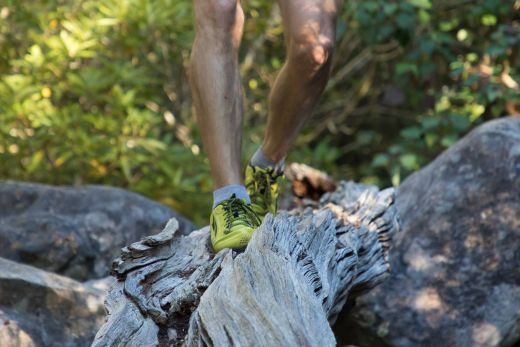So you’ve heard all about the benefits of zero-drop shoes and are ready to make the swap. You’ve even been down to the store and have eyed out a few potential purchases. But, before you whip out your wallet, there’s just one question you need answered: what is this transitioning thing that new zero-drop runners have to do, and how long does it take? There’s no straightforward answer to this as it depends on several factors. But then there is this helpful article to offer you some guidelines and get you started.
What is transitioning and why is it important?
You can’t simply bin your old shoes and then run a marathon in a new pair of zero-drops if you’ve never run in flat shoes before. Running in zero-drops recruits different muscles, and if you tried to run your usual weekly mileage in your first pair right off the bat, you would almost certainly overload muscles that hadn’t yet had a chance to adapt to the change in biomechanics. To avoid injury, it’s important that you start by only running a small fraction of your usual weekly distance in your new shoes. Then, with every passing week, you up the percentage of the total mileage you do in the new shoes.
Your next question might be how long does this transition take? And the answer, as with so many things, is that it depends on several factors:
- Stack height of previous shoes
- Running experience
- History of injury
If the heel drop on your previous shoes were low, you could probably transition a little faster. If it were larger, your muscles and tendons would need more time for a more significant adaptation. Your running experience is another factor affecting how fast you can transition. If most of your running has been on paved or relatively smooth surfaces, you won’t have the same lower leg musculature as a runner who clocks most of their miles on technical trails and will need to spend more time developing those muscles. Lastly, you need to consider your history of injury. If you are more injury prone, you obviously have to take things slower.
How should you transition to zero-drop shoes?
There are two strategies for transitioning to zero-drop shoes. The second strategy essentially repeats the process outlined in the first strategy and so takes longer. But strategy #2 is the sensible approach if your current shoes have a large heel drop - anything over 6 mm. Others might get away with strategy #1.
Strategy 1: Alternate between zero-drops and old shoes
The standard transition strategy involves alternating between your new zero-drops and old conventional shoes until you’re doing all your running in your zero-drops. I relied on this strategy since the shoes I was transitioning from didn’t have much of a heel drop - just 4 mm. What I’ve described below is an average runner’s transitioning protocol for a heel drop of 6 mm or less. As has already been explained, you might be able to shorten your transition time if your legs are well conditioned, you have no recent history of injury, and the change in heel drop is small. Conversely, you might have to extend your transition time if these factors are against you.
| Week | Kilometres in zero-drops | Kilometers in old shoes |
| Wk 1 | 5 | 22 |
| Wk 2 | 7 | 20 |
| Wk 3 | 9 | 18 |
| Wk 4 | 11 | 16 |
| Wk 5 | 13 | 14 |
| Wk 6 | 15 | 12 |
| Wk 7 | 17 | 10 |
| Wk 8 | 19 | 8 |
| Wk 9 | 21 | 6 |
| Wk 10 | 23 | 4 |
| Wk 11 | 25 | 2 |
| Wk 12 | 27 | 0 |
A 12-week progression program might look like this if you were to initially split a total weekly mileage of 27 kilometers between new shoes and old ones.
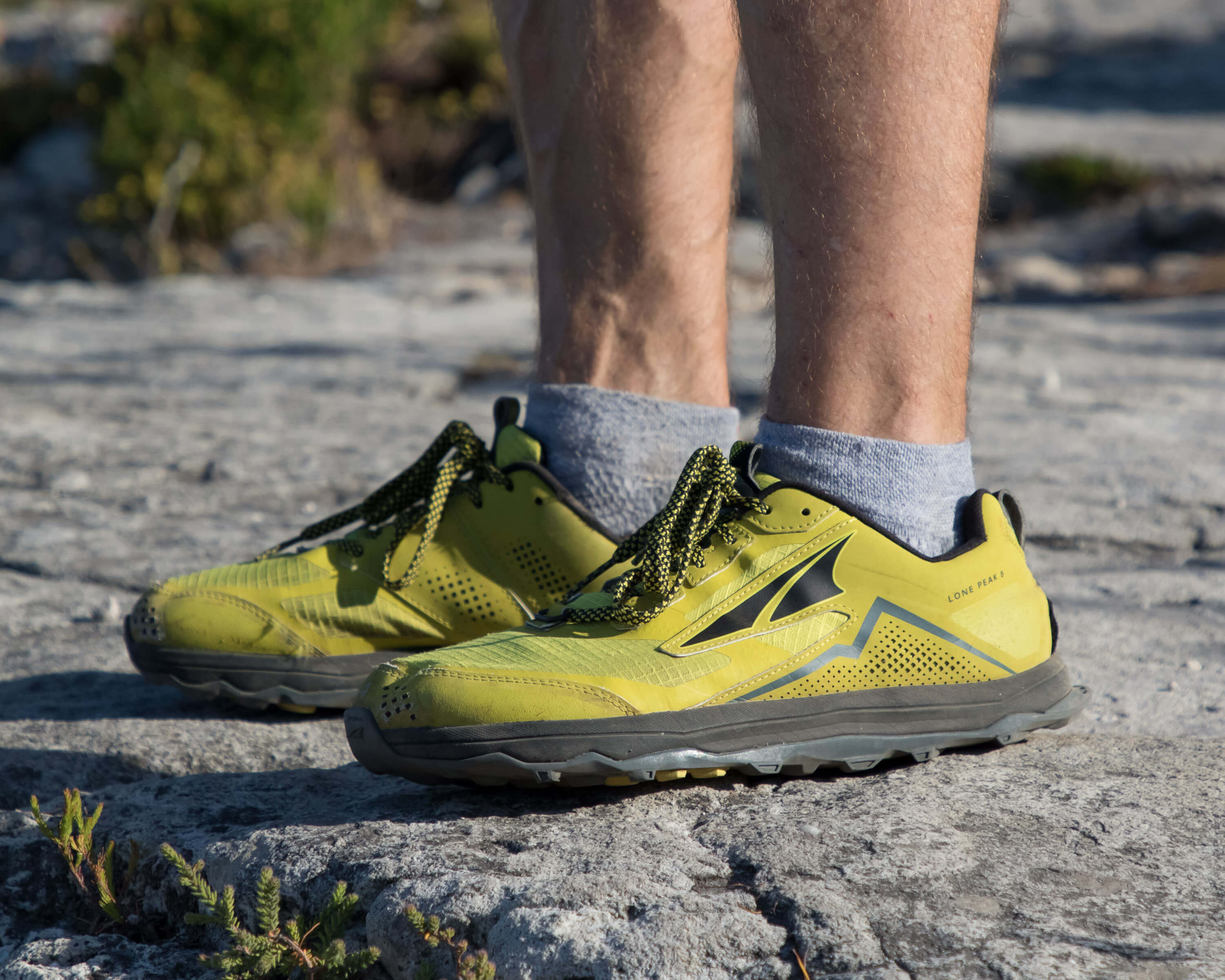
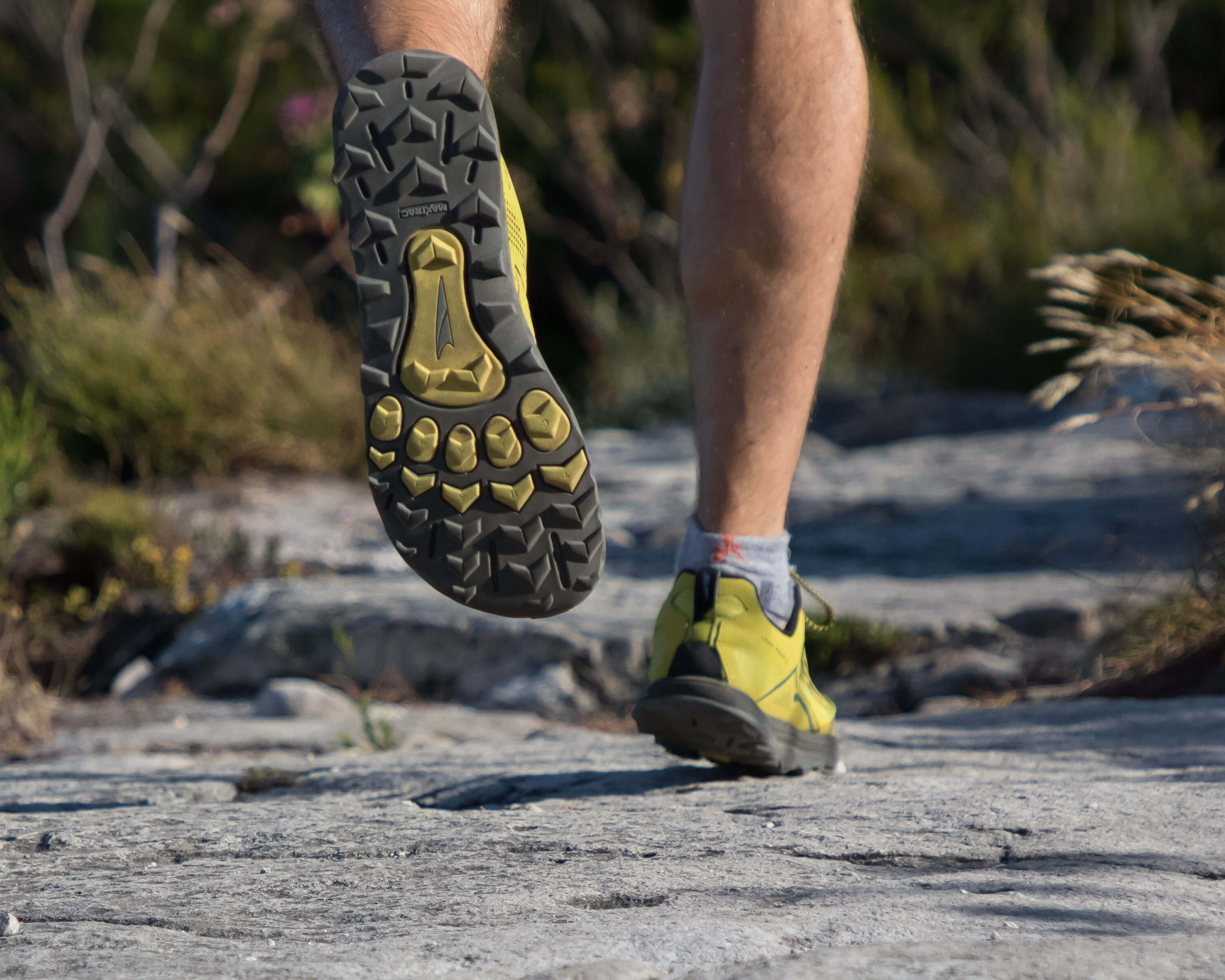
Strategy 2: Transition to an intermediate low-drop shoe and then a zero-drop
It’s not recommended to transition straight from a shoe with a large heel drop to a zero-drop. A change of 7mm or more is likely to be more than your body can adjust to. The sensible approach is to first transition to a pair of low-drop shoes using a protocol like that described above, and then transition again from the low-drop shoes to the zero-drop shoes. This means having two pairs of shoes in rotation for two cycles – so three pairs in total. Some runners might say that’s more than they can afford, but you’re not actually buying more shoes than you normally would if you use both your old shoes and transitioning low-drop shoes until they have nothing left in them.
| Week | Kilometres in zero-drop or low-drop shoes | Kilometers in older shoes |
| Wk 1 | 5 | 24 |
| Wk 2 | 7 | 22 |
| Wk 3 | 8 | 21 |
| Wk 4 | 10 | 19 |
| Wk 5 | 11 | 18 |
| Wk 6 | 13 | 16 |
| Wk 7 | 14 | 15 |
| Wk 8 | 16 | 13 |
| Wk 9 | 17 | 12 |
| Wk 10 | 19 | 10 |
| Wk 11 | 20 | 9 |
| Wk 12 | 22 | 7 |
| Wk 13 | 23 | 6 |
| Wk 14 | 25 | 4 |
| Wk 15 | 26 | 3 |
| Wk 16 | 28 | 1 |
| Wk 17 | 29 | 0 |
A 17-week progression program might look like this if you were to initially split a total weekly mileage of 29 kilometers between transitional low-drop shoes and old ones. You would then repeat this again for the low-drop shoes and zero-drops.
A pair of shoes will do only a certain number of miles (might vary across types of terrain) regardless of whether you are alternating them with another pair or changing over only after you’ve worn out the previous pair. So the key to implementing strategy 2 is to make your transition phases roughly half the length of the expected life of a pair of shoes. Ideally you’d start transitioning to the intermediate low-drop shoes when your old conventional shoes are at half life. Then when your old shoes get binned and phase two starts, your low-drop shoes will be at half life when you start alternating them with the zero-drops. The average runner takes 4 to 6 months to go through a pair of shoes, so we can guestimate that a full transition using this process might take 8 to 12 months.
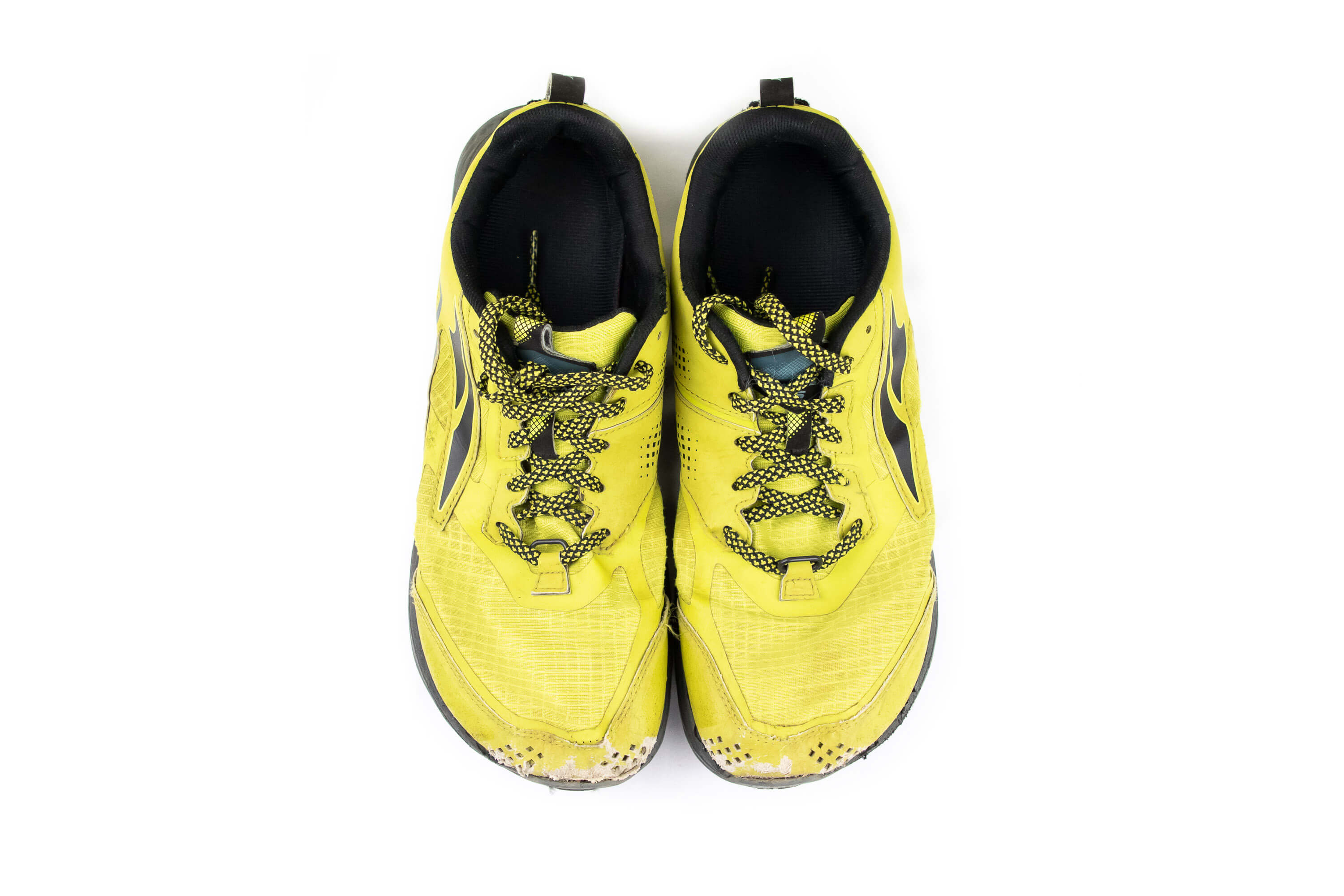
Does walking around in casual shoes help?
It could help your transition to walk around in zero-drops during the day, but don’t do this in your running shoes. Running and walking create different wear patterns in your insole, and you don’t want to unnecessarily create a walking imprint in your running shoes when you need them to support your feet when you run. What you can do is get a pair of casual shoes like Feelgrounds, VivoBarefoot, Be Lenka, or Mukishoes. Most of these are as stylish as they are comfortable. Just know that they are no substitute for a proper transitioning protocol.
What else can you do to transition successfully?
Zero-drop shoes have been a great innovation, but it’s important to remember that it’s good form and strong muscles that improve efficiency and lower the risk of injury. Flat shoes will help you in achieving both by encouraging a more natural gait, but you should also take a more direct approach to these aspects of your running.
Focus on form
Much has been written on proper running form, but it’s really not that complicated. Good technique can be summed up in three points: midfoot strike, short strides with high cadence, and good posture. Both a forefoot strike and midfoot strike are better than a heel strike, which puts unnecessary pressure on your joints. If you still land on your heels, you can break the habit by adjusting your gait. The chances are that you’re overstriding, which makes it easier to land heel first. Make your strides smaller and work on a faster turnover. A short stride and high cadence is also more efficient and will give you a greater degree of stability on the trail.
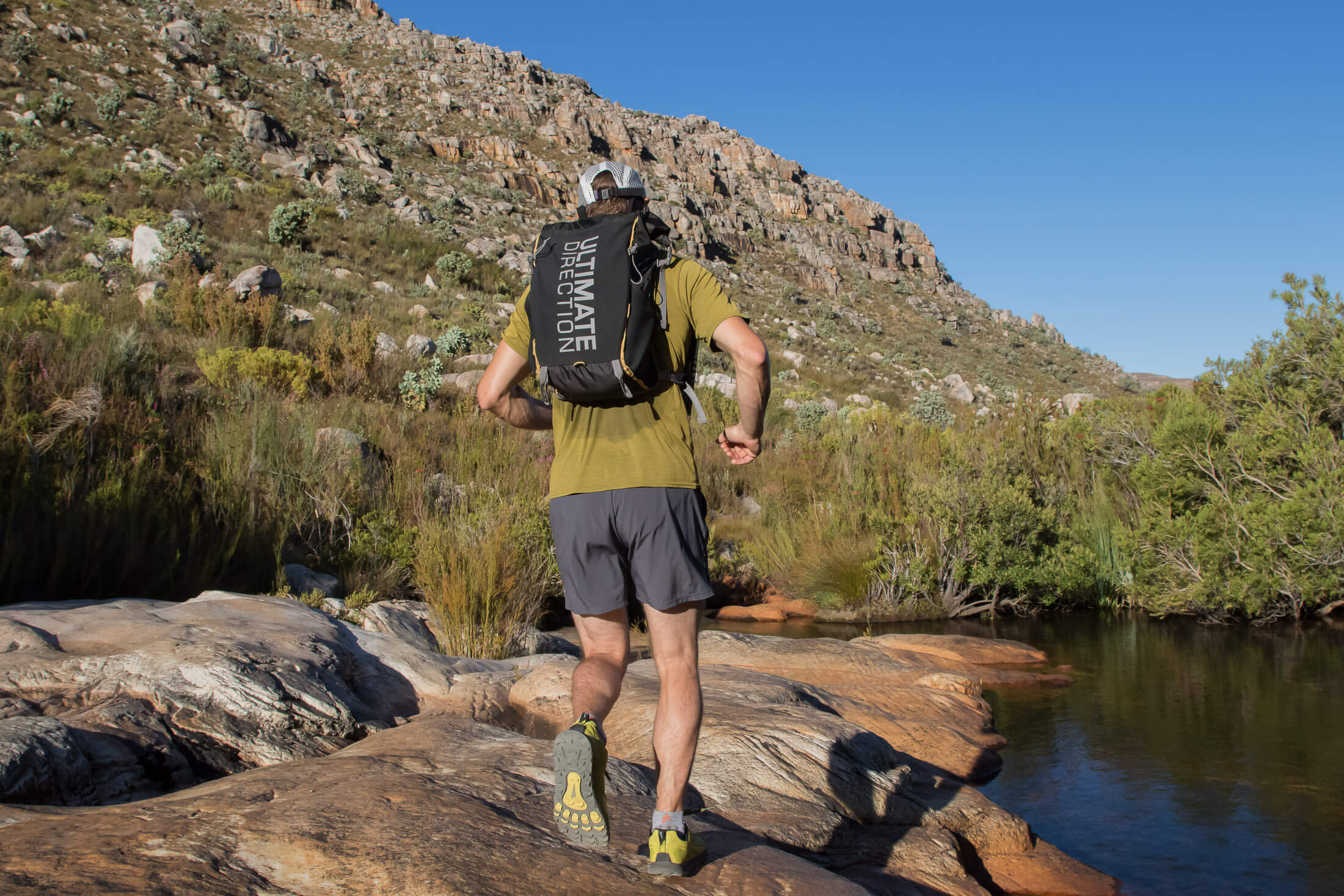
Perform conditioning exercises
Wearing shoes with raised heels causes your calf muscles to shorten. To get some length and suppleness back into these all-important muscles, stretch them regularly, and then massage or foam roll them after every run. A strengthening exercise like single-leg calf raises will also help prepare your lower legs to cope with the extra workload. The other soft tissue that is going to take a pounding, literally, is the muscle and fascia in your arches. Whereas these were once supported by an overbuilt inner sole, your foot muscles will now have to do the heavy lifting. Perform arch raises and towel curls three to four times a week to strengthen these and aid the transition process.
Single-leg calf raises
1. Standing, lift your heels as high as you can. Use a wall for balance.
2. Hold the upper position for 5 seconds.
3. Lower back down to the floor.
Do 2 to 3 sets of 15 to 20 repetitions.
Arch raises
1. Stand with your feet directly underneath your hips.
2. Roll your weight to the outer edges of your feet as you lift your arches up as far as you can. Your toes have to stay in contact with the floor the entire time.
3. Relax your feet and allow your arches to sink to the floor.
Do 2 to 3 sets of 10 to 15 repetitions.
Towel curls
1. Sit in a chair with a towel under your feet.
2. Push your heels into the floor as you curl your toes to scrunch up the towel.
3. Hold for a few seconds and release. Make sure the ball of your foot presses into the floor or towel.
Do 2–3 sets of 10–15 repetitions.
Get more advice from this gearhead
You now know everything you need to know about minimalist and zero drop running shoes. But don’t stop here. On this website you’ll find many more in-depth gear guides on everything from running vests to trekking poles as well as many more how-to articles. See the links below for favourites or, even better, sign up for my newsletter to get all the latest from Trail & Crag delivered straight to your inbox.
